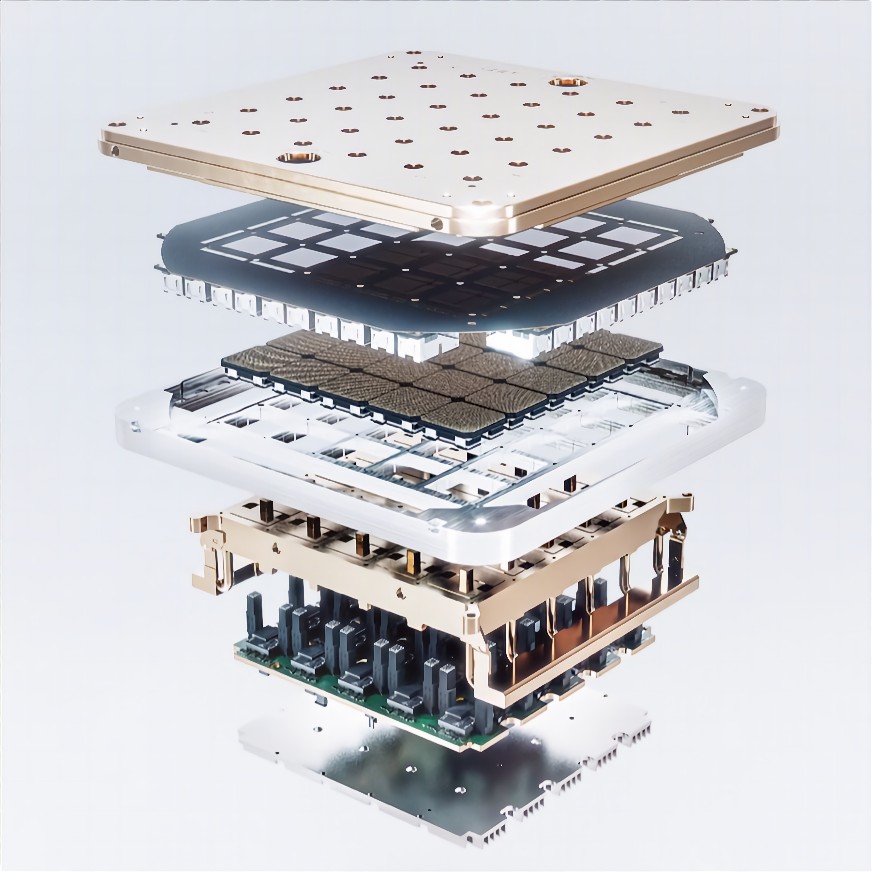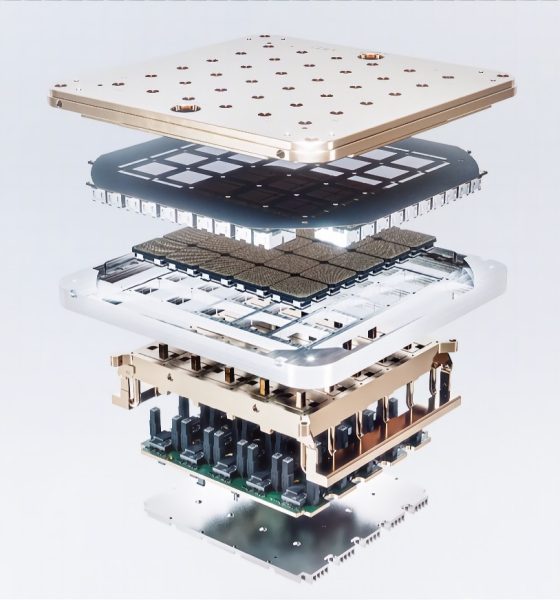Much excitement surrounding Tesla’s Dojo supercomputing cluster has been swirling in recent months since the system went online, and the automaker already expects it to be one of the world’s most powerful supercomputers by early next year. But one reporter recently noted that Dojo could someday have additional uses beyond processing vast amounts of data for Tesla’s Full Self-Driving (FSD) system and humanoid robot.
Dojo can process millions of terabytes of video data per second from the company’s vehicles, training its neural network at an incredible rate. The company has said that the video foundation models input to Dojo would effectively serve as the brain of its vehicles and its Optimus robot.
In a recent video segment about how Dojo is expected to revolutionize self-driving, however, Yahoo Finance reporter Pras Subramanian also talked about the supercomputing cluster’s potential applications beyond FSD and Optimus.
The short discussion, hosted by Seana Smith, details how the Dojo system will use Tesla’s AI model to train FSD. However, Subramanian also says the supercomputer could someday be used for vessels other than cars, including motorcycles, bicycles and boats. The conversation also touched on how Dojo works, the complexity of training AI to handle roads and Ford and Volkswagen’s decision to end Argo AI operations, among other topics.
You can watch a short clip from the video segment below or see the full conversation here.
As for cars, Musk has previously talked about the potential of using Dojo to perform traffic control simply with the system’s inputs for things like accidents, potholes, road closures or other data that would be useful for a Tesla to access in real-time. Musk said in June that Dojo had been “online and running useful tasks for a few months,” helping out with production workloads and spurring on the current round of excitement surrounding the computing cluster.
In June, Tesla posted about Dojo on X, detailing how its neural networks were already being accessed in its cars and adding that the company is “building the foundation models for autonomous robots.” Below is an excerpt from the thread:
“Our multi-modal neural networks are already in customer vehicles—these networks take in arbitrary modalities such as camera videos, maps, navigation, IMU (Inertial Measurement Unit), GPS etc.
Tasks such as Occupancy prediction are already quite general in what they represent—in some ways, they are ontology-free & simply predict the probability that some 3D position is occupied.
Such occupancy can be used for collision avoidance by any robot.
All of this is enabled by fleet scale auto-labelling. By using video data from multiple trips in the same location, we can reconstruct the entire scene
In addition, we’re building off state-of-the-art generative modeling techniques—enabling us to predict possible outcomes given past observations, in a jointly consistent manner across multiple camera views”
These imagined futures can be action-conditioned to produce different outcomes.
For example, the videos below are generated entirely by the neural network by simply using different prompts pic.twitter.com/ZuJEYcLuZK
— Tesla AI (@Tesla_AI) June 21, 2023
In 2021, Musk said that Dojo could likely someday reduce traffic fatalities by 90 percent and eventually it may be able to reduce them by more than 99 percent.
Last month, a report showed that Tesla had doubled its order of D1 Dojo chips for next year from Taiwan Semiconductor Manufacturing Company (TSMC), now totaling 10,000 units. According to the report, the company also plans to increase its order in 2025. Morgan Stanley also said last month that Dojo could add $500 billion to Tesla’s enterprise value.
Tesla Dojo trade secrets lawsuit officially settles out of court
What are your thoughts? Let me know at zach@teslarati.com, find me on X at @zacharyvisconti, or send your tips to us at tips@teslarati.com.

Elon Musk
Elon Musk’s X will start using a Tesla-like software update strategy
The initiative seems designed to accelerate updates to the social media platform, while maintaining maximum transparency.

Elon Musk’s social media platform X will adopt a Tesla-esque approach to software updates for its algorithm.
The initiative seems designed to accelerate updates to the social media platform, while maintaining maximum transparency.
X’s updates to its updates
As per Musk in a post on X, the social media company will be making a new algorithm to determine what organic and advertising posts are recommended to users. These updates would then be repeated every four weeks.
“We will make the new 𝕏 algorithm, including all code used to determine what organic and advertising posts are recommended to users, open source in 7 days. This will be repeated every 4 weeks, with comprehensive developer notes, to help you understand what changed,” Musk wrote in his post.
The initiative somewhat mirrors Tesla’s over-the-air update model, where vehicle software is regularly refined and pushed to users with detailed release notes. This should allow users to better understand the details of X’s every update and foster a healthy feedback loop for the social media platform.
xAI and X
X, formerly Twitter, has been acquired by Elon Musk’s artificial intelligence startup, xAI last year. Since then, xAI has seen a rapid rise in valuation. Following the company’s the company’s upsized $20 billion Series E funding round, estimates now suggest that xAI is worth tens about $230 to $235 billion. That’s several times larger than Tesla when Elon Musk received his controversial 2018 CEO Performance Award.
As per xAI, the Series E funding round attracted a diverse group of investors, including Valor Equity Partners, Stepstone Group, Fidelity Management & Research Company, Qatar Investment Authority, MGX, and Baron Capital Group, among others. Strategic partners NVIDIA and Cisco Investments also continued support for building the world’s largest GPU clusters.
News
Tesla FSD Supervised wins MotorTrend’s Best Driver Assistance Award
The decision marks a notable reversal for the publication from prior years, with judges citing major real-world improvements that pushed Tesla’s latest FSD software ahead of every competing ADAS system.

Tesla’s Full Self-Driving (Supervised) system has been named the best driver-assistance technology on the market, earning top honors at the 2026 MotorTrend Best Tech Awards.
The decision marks a notable reversal for the publication from prior years, with judges citing major real-world improvements that pushed Tesla’s latest FSD software ahead of every competing ADAS system. And it wasn’t even close.
MotorTrend reverses course
MotorTrend awarded Tesla FSD (Supervised) its 2026 Best Tech Driver Assistance title after extensive testing of the latest v14 software. The publication acknowledged that it had previously criticized earlier versions of FSD for erratic behavior and near-miss incidents, ultimately favoring rivals such as GM’s Super Cruise in earlier evaluations.
According to MotorTrend, the newest iteration of FSD resolved many of those shortcomings. Testers said v14 showed far smoother behavior in complex urban scenarios, including unprotected left turns, traffic circles, emergency vehicles, and dense city streets. While the system still requires constant driver supervision, judges concluded that no other advanced driver-assistance system currently matches its breadth of capability.
Unlike rival systems that rely on combinations of cameras, radar, lidar, and mapped highways, Tesla’s FSD operates using a camera-only approach and is capable of driving on city streets, rural roads, and freeways. MotorTrend stated that pure utility, the ability to handle nearly all road types, ultimately separated FSD from competitors like Ford BlueCruise, GM Super Cruise, and BMW’s Highway Assistant.
High cost and high capability
MotorTrend also addressed FSD’s pricing, which remains significantly higher than rival systems. Tesla currently charges $8,000 for a one-time purchase or $99 per month for a subscription, compared with far lower upfront and subscription costs from other automakers. The publication noted that the premium is justified given FSD’s unmatched scope and continuous software evolution.
Safety remained a central focus of the evaluation. While testers reported collision-free operation over thousands of miles, they noted ongoing concerns around FSD’s configurable driving modes, including options that allow aggressive driving and speeds beyond posted limits. MotorTrend emphasized that, like all Level 2 systems, FSD still depends on a fully attentive human driver at all times.
Despite those caveats, the publication concluded that Tesla’s rapid software progress fundamentally reshaped the competitive landscape. For drivers seeking the most capable hands-on driver-assistance system available today, MotorTrend concluded Tesla FSD (Supervised) now stands alone at the top.
News
Elon Musk’s Grokipedia surges to 5.6M articles, almost 79% of English Wikipedia
The explosive growth marks a major milestone for the AI-powered online encyclopedia, which was launched by Elon Musk’s xAI just months ago.

Elon Musk’s Grokipedia has grown to an impressive 5,615,201 articles as of today, closing in on 79% of the English Wikipedia’s current total of 7,119,376 articles.
The explosive growth marks a major milestone for the AI-powered online encyclopedia, which was launched by Elon Musk’s xAI just months ago. Needless to say, it would only be a matter of time before Grokipedia exceeds English Wikipedia in sheer volume.
Grokipedia’s rapid growth
xAI’s vision for Grokipedia emphasizes neutrality, while Grok’s reasoning capabilities allow for fast drafting and fact-checking. When Elon Musk announced the initiative in late September 2025, he noted that Grokipedia would be an improvement to Wikipedia because it would be designed to avoid bias.
At the time, Musk noted that Grokipedia “is a necessary step towards the xAI goal of understanding the Universe.”
Grokipedia was launched in late October, and while xAI was careful to list it only as Version 0.1 at the time, the online encyclopedia immediately earned praise. Wikipedia co-founder Larry Sanger highlighted the project’s innovative approach, noting how it leverages AI to fill knowledge gaps and enable rapid updates. Netizens also observed how Grokipedia tends to present articles in a more objective manner compared to Wikipedia, which is edited by humans.
Elon Musk’s ambitious plans
With 5,615,201 total articles, Grokipedia has now grown to almost 79% of English Wikipedia’s article base. This is incredibly quick, though Grokipedia remains text-only for now. xAI, for its part, has now updated the online encyclopedia’s iteration to v0.2.
Elon Musk has shared bold ideas for Grokipedia, including sending a record of the entire knowledge base to space as part of xAI’s mission to preserve and expand human understanding. At some point, Musk stated that Grokipedia will be renamed to Encyclopedia Galactica, and it will be sent to the cosmos.
“When Grokipedia is good enough (long way to go), we will change the name to Encyclopedia Galactica. It will be an open source distillation of all knowledge, including audio, images and video. Join xAI to help build the sci-fi version of the Library of Alexandria!” Musk wrote, adding in a later post that “Copies will be etched in stone and sent to the Moon, Mars and beyond. This time, it will not be lost.”










